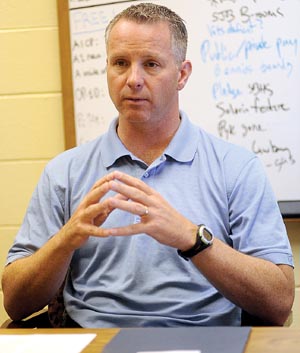Last year, Governor Jerry Brown signed SB X2, which requires California’s utility districts to provide one-third of their total electricity from “renewable” sources by 2020. At the media event held for the signing of the more onerous Renewables Portfolio Standard (RPS) program, the Governor and the bill’s author, Senator Joe Simitian (D-Palo Alto), spoke of how great this would be for California as a world leader.
They spoke of solar and wind as the future for energy production in the state. They said the rest of the world would see California as a shining example and emulate these standards. What they left out of their speeches was our current economic reality and the effect this legislation would have on the average Californian as more wind and solar energy are required. Meeting these new standards will be extremely costly, and it will ultimately be the consumer who is burdened by the high price of the implementation.
Those costs are amplified in areas such as ours. Utilities in the Central Valley will have to spend millions of dollars each year in order to reach RPS goals. For example, consider the impact to Pacific Gas & Electric (PG&E) ratepayers. PG&E estimates it will cost approximately $9.6 billion over the next nine years to comply with the program.
In our current economy, those costs are too great. With so many of our friends and neighbors just barely scraping by, we should be reducing the costs associated with basics such as lighting our homes and keeping our families warm. For those on fixed incomes – not to mention struggling businesses – such increases are devastating.
Unfortunately, the political reality is that we must live with the law. However, this does not mean that we can’t improve the law and make it more affordable without reducing environmental goals.
In the implementation of RPS, the glaring omission of our state’s oldest renewable energy source, hydroelectric power, has resulted in large hydroelectric facilities not qualifying under the RPS program. The power generated by these facilities is every bit as clean as the power generated by wind or the sun.
PG&E generates almost 4,000 megawatts of hydroelectric power annually, which is enough power to meet the needs of nearly 4 million homes. But as the program works now, much of that power is ineligible and PG&E needs to purchase enough renewable power elsewhere to meet its RPS mandate.
It isn’t just PG&E that faces this problem. For decades, irrigation districts and utilities across the state have obtained a great percentage of their electricity from the water that flows down our state’s rivers and through our dams.
There is no reason hydroelectric power facilities such as these should not be counted as a renewable energy source in RPS calculations. To address this issue, I introduced a bill last year that would have included them as a renewable resource. My colleagues in the Senate had concerns with the bill and I have since worked with them to address those issues.
This year, taking their feedback into consideration, I introduced new legislation that removes hydroelectric power from the RPS equation. SB 971 would change the program by computing RPS based on a utility’s total load, less the portion generated from large hydroelectric facilities. So if a utility district received 25% of the electricity it delivers to its customers from these facilities, their new RPS mandate would be on the remaining 75% of power generated from other sources.
SB 971 would significantly reduce the costs of complying with RPS. From Turlock to Merced to Modesto, this would mean multi-million dollar annual savings.
The fight to get this bill passed will not be an easy one. There are many special interests up in Sacramento that do not care about the costs that are passed along to a struggling family or a senior on a fixed income. As your senator, I pledge to find ways to bring relief for Californians during this tough economic period. I will be doing all I can to make sure this bill is signed into law this year.
Anthony Cannella is the state senator representing San Benito County.










